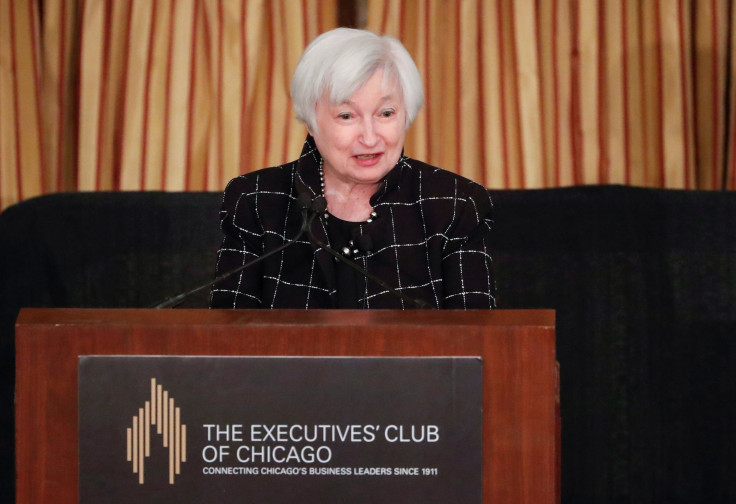Will The Federal Reserve Raise Interest Rates? Watch Live Stream Of Janet Yellen's Announcement

UPDATE: 2:05 PM - Federal Reserve Chair Janet Yellen announced that the central bank would hike the federal funds rate to a range of between 0.75 and 1 percent Wednesday.
Federal Reserve Chair Janet Yellen is expected almost universally to announce the central bank’s decision to raise its interest rate target, known as the federal funds rate, following the close of a two-day policy meeting Wednesday at 2:30 p.m.
Those curious about the Fed’s decision to raise the rate, which will likely push up interest rates on mortgages, credit card debt and other loans, can tune in to the live stream on the central bank’s website, or its YouTube page.
Read: Fed Chair Says Interest Rate Increase ‘Will Not Be As Slow’ As In 2015 And 2016
The chance of a rate increase Wednesday to a range between 0.75 and 1 percent, from the current band of 0.5 to 0.75 percent, stood at 93 percent, according to the futures exchange marketplace CME Group. Megabanks surveyed by Reuters said, without exception, the Fed would raise the rate by a quarter of a percentage point.
The move would mark only the third rate hike since the Great Recession, after which the Fed lowered it to a range of zero to a quarter point from more than 5 percent.
The Fed uses the policy rate as a means of controlling inflation and runaway economic growth, reeling in spending and borrowing by consumers with each incremental hike. Conversely, the central bank drops the rate, as it did from 2007 to 2009, to stimulate more economic activity in response to a crisis.
Without a gradual return to what Yellen and her fellow Fed leaders often refer to as a “neutral rate” of around 3 percent, America’s monetary policymaking body will have no where to turn if a sudden economic catastrophe hits the U.S. (The Fed does not print large amounts of money as part of its work to keep the economy stable, contrary to popular belief.)
The last time Yellen announced a rate hike, in mid-December, she cited a rise in inflation and a strong labor market as reasons behind the decision. Those two factors may help hawkish Fed leaders make the case for an increase by the close of this week’s Federal Open Markets Committee meeting, which began Tuesday, as the U.S. unemployment rate fell 0.1 percentage point to 4.7 percent in February, according to the most recent jobs report from the Bureau of Labor Statistics. Inflation, meanwhile, climbed above the Fed’s annual 2 percent target in January.
Read: Should The Fed Raise Interest Rates? Stocks, Dollar Surge As Central Bank Leader Pushes For A Hike
Additionally, Yellen suggested in December that 2017 would see three rate increases. After Wednesday’s meeting, the central bank will have six more chances to raise rates this year.
© Copyright IBTimes 2025. All rights reserved.






















